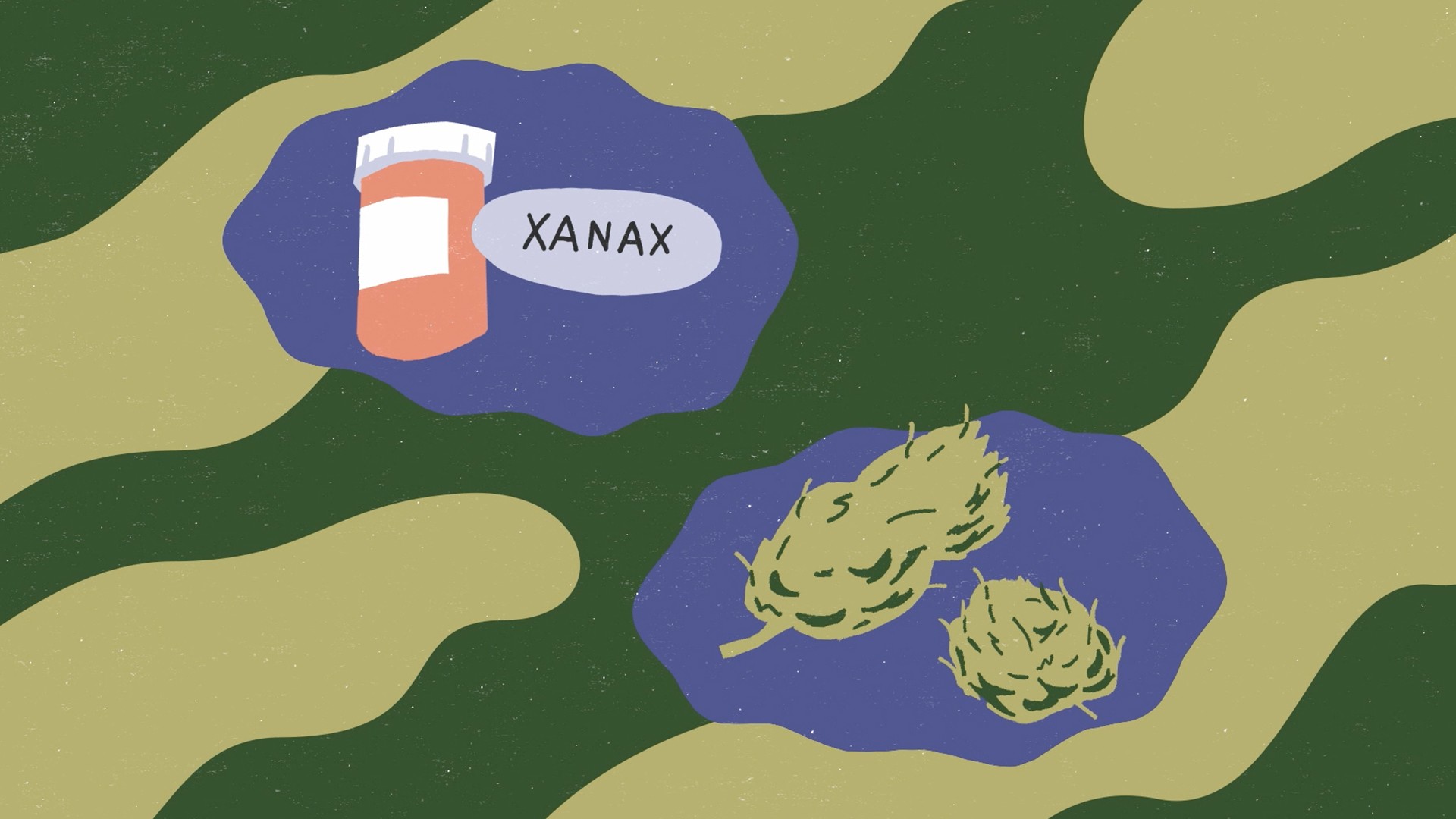On a recent Saturday, photographer Nan Goldin and a band of roughly 100 fellow activists threw pill bottles into the reflecting pool near the Temple of Dendur at the Metropolitan Museum of Art in New York City. The space was funded by the Sacklers, the family that owns the drug Oxycontin's manufacturer Purdue Pharma, and the group was trying to call the clan to account for the opioid overdose catastrophe, a crisis spurred in part by aggressive marketing of that pill.“We are artists, activists, addicts,” Goldin shouted, according to a New York Times report. “We are fed up.”

But the simultaneous rise of another potentially addictive and deadly prescription in America has received far less attention. Understanding why could shed light on the best way to manage both the opioid epidemic and this less-notorious one—and help prevent or at least mitigate future crises.Between 1999 and 2016, as many Americans are now at least vaguely aware, the number of deaths from overdoses that included opioids quintupled. However, during roughly the same period, the number of OD deaths that involved benzodiazepines (a.k.a. "benzos") increased by a mind-boggling factor of nearly eight. In terms of the absolute number of deaths, opioids are more deadly, but it’s important to note that more than 30 percent of opioid-overdose deaths are actually better described as fatal mixtures of the two classes of drugs.Benzodiazepines include drugs like Xanax, Klonopin, and Valium, the drug immortalized in the Rolling Stones track “Mother’s Little Helper” for its sedative and calming (albeit, at least in the song, ultimately deadly) properties. As with opioids, a great deal of the harm associated with benzos comes when they are combined with other drugs. Opioids, alcohol, and benzodiazepines are exponentially riskier when taken together because their effects in slowing breathing are synergistic, not simply cumulative. Indeed, research has suggested that as many as 90 percent of benzodiazepine-associated deaths also involved an opioid and about 80 percent of benzo recreational use was carried out in concert with other substances.But while attention has rightly focused on the role of pharmaceutical marketing in the opioid crisis, which included pushing hospitals to declare pain as “the fifth vital sign,” that doesn't seem to explain the surge of benzo use and overdoses in recent years.Benzodiazepines are overwhelmingly available in generic form, and no company was out there marketing them, at least in the past few decades, the way giants like Purdue promoted newer behemoths like Oxycontin. “The biggest seller now is Xanax, which came on the market in 1986,” explained Allen Frances, MD, a leading psychiatrist and author of Twilight of American Sanity.Nor did most activists make the case that anxiety was massively under-treated or that benzodiazepines were not as addictive as previously believed. Hospitals did not dub anxiety—among the primary symptoms these drugs are used to treat—another "vital sign."Nonetheless, filled benzodiazepine prescriptions increased 67 percent between 1996 and 2013 alone—and the number of pills actually dished out, adjusted for potency, at least tripled. So what happened?“America has had a love affair with sedatives, going back at least to the 20s and 30s,” said David Herzberg, associate professor of history at the State University of New York at Buffalo, and author of Happy Pills in America: From Miltown to Prozac. Drugs with sedative qualities include barbiturates and benzodiazepines—and, at some doses, alcohol and opioids. Basically, a sedative is any drug that makes you calm and sleepy; they are also sometimes known as depressants.According to Herzberg, in the 1940s and 50s, measured on a per capita basis, the overdose death rate from barbiturate tranquilizers in the United States was actually worse than the rate associated with opioids in 2013, when opioid overdose deaths had already risen for 11 consecutive years. This is ironic, because, Herzberg noted, barbiturates first rose to popularity after concerns were raised about opioids—drugs like opium, morphine, and heroin—in the 1910s and 20s. These fears, stoked in large part by panic over immigration and race, led to strict controls on supply, including complete criminalization of opium and heroin.That, in turn, led doctors to switch to barbiturates for patients who had Insomnia, “nerves” or anxiety. Barbiturates, however, are at least as risky in terms of overdose as opioids—and withdrawal from them may be even worse because it can cause potentially deadly seizures.Growing recognition of the barbiturate overdose and addiction problem in the 40s and 50s led to another substitution: The first benzodiazepine was introduced in 1960. This class of drugs is indeed significantly safer: Barbiturates can be fatal at just ten times the therapeutic dose, while it takes 100 times an effective dose of benzodiazepines to kill, according to Herzberg. It took until 1975, however, for the potential harm that is nonetheless associated with benzodiazepines— including addiction, worsened anxiety, and physical dependence—to be recognized and for them to become controlled substances.But panics over drugs aren’t usually directly associated with the amount of damage they do or their specific dangers: As Herzberg put it, drugs become “an object of popular fascination when it serves the need of groups that want to make them that way.”In the 1970s, this concern seems to have been specifically gendered. The misogynistic sneer of “Mother’s Little Helper,” for instance, inadvertently illustrated why feminists began to raise hell over benzos' widespread use to tranquilize housewives, whom they saw as appropriately upset with American society rather than mentally ill. Claims were made that a third of all women took drugs in this class at that time—feminists argued this suggested a serious problem with life conditions for American women, not a need to medicate them into submission.“Feminists found Valium to be a really useful symbol of way that women’s problems that they interpreted as political were instead treated as signs of hysteria and instability and treated with drugs by doctors,” Herzberg told me. By the 1980s and 90s, a new class of psych meds was on the rise, led by Prozac, which was first sold in the US in 1988. Once again, it was helped along by the backlash against the immediately previous favorites, which was, in that case, benzos.There is no easy marketing explanation for benzos' more recent resurgence, however—although substitution due to disenchantment with serotonin drugs like Prozac could be part of it.At some point, though, this longer arc of America's drug story begs the question: Why do we always need some chemical fix? Kelly Knight, associate professor of anthropology at the University of California, San Francisco Medical School, noted in an interview the “deaths of despair” theory put forward to explain the rise in opioid, alcohol, and suicide mortality. She asked, "Is there something socio-culturally happening in US that is making folks particularly anxious, insecure and depressed?”The obvious answer is yes, as is so vividly illustrated by the rise of Donald Trump and the preceding explosion of inequality that has decimated the middle class. While drug use has always existed in human society, a sudden, widespread increase in addiction, suicide and multiple-drug overdose cannot just be a result of flashy ads and increased availability of numbing substances."It’s silly to imagine that we’re all just pawns of marketers," Herzberg told me. “What marketers do is take things that do matter to us and are real suffering and try to channel it in certain ways—and they are most successful when they really do have something to offer.”This is not to excuse pharma or suggest that supply increases are completely irrelevant. Nor is it to argue that we should shift from panicking over opioids to panicking over benzodiazepines—while both classes of drugs can clearly do harm, there are just as clearly some who benefit.Instead, Americans need to take pain, suffering, and anxiety seriously and provide genuine help to those who are afflicted. Stopping a prescription doesn’t end an addiction—nor does it treat pain; indeed, cutting off patients who are functioning well on opioids can lead to disability and even suicide. As the Times reported Tuesday, an expected Medicare regulation limiting prescription of pain medications was being widely denounced by doctors out of fear it would cause more needless suffering and even death.Companies like Purdue Pharma need to pay for the role they played in this crisis. But unless we rebuild the connective fabric that supports a healthy society, create the conditions for meaningful work and family life for as many as possible and protect the most vulnerable, a new drug epidemic will always be just around the corner.Sign up for our newsletter to get the best of VICE delivered to your inbox daily.Follow Maia Szalavitz on Twitter.
Advertisement

But the simultaneous rise of another potentially addictive and deadly prescription in America has received far less attention. Understanding why could shed light on the best way to manage both the opioid epidemic and this less-notorious one—and help prevent or at least mitigate future crises.Between 1999 and 2016, as many Americans are now at least vaguely aware, the number of deaths from overdoses that included opioids quintupled. However, during roughly the same period, the number of OD deaths that involved benzodiazepines (a.k.a. "benzos") increased by a mind-boggling factor of nearly eight. In terms of the absolute number of deaths, opioids are more deadly, but it’s important to note that more than 30 percent of opioid-overdose deaths are actually better described as fatal mixtures of the two classes of drugs.Benzodiazepines include drugs like Xanax, Klonopin, and Valium, the drug immortalized in the Rolling Stones track “Mother’s Little Helper” for its sedative and calming (albeit, at least in the song, ultimately deadly) properties. As with opioids, a great deal of the harm associated with benzos comes when they are combined with other drugs. Opioids, alcohol, and benzodiazepines are exponentially riskier when taken together because their effects in slowing breathing are synergistic, not simply cumulative. Indeed, research has suggested that as many as 90 percent of benzodiazepine-associated deaths also involved an opioid and about 80 percent of benzo recreational use was carried out in concert with other substances.
Advertisement
Advertisement
Advertisement
Advertisement

